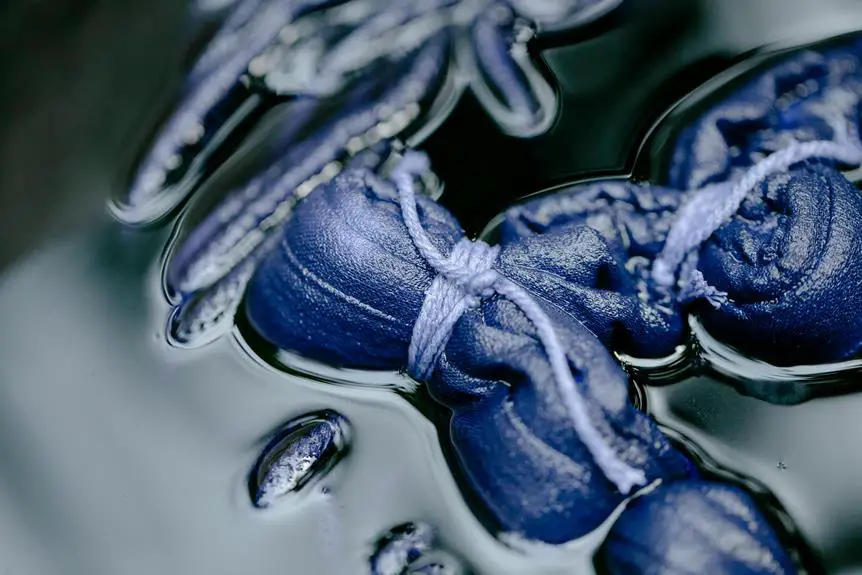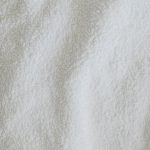When you decide to dye Oxford fabric, you'll want to ensure you're starting with a clean slate, so washing it with a mild detergent is essential. After that, choosing the right dye can make all the difference in achieving vibrant results. You might consider testing a swatch first, but there's more to explore in terms of techniques that can elevate your project. Understanding the nuances of color setting and the specific methods can significantly impact your final outcome, and knowing these details can help you avoid common pitfalls. What's the best approach for your specific fabric type?
Table of Contents
Understanding Oxford Fabric
Oxford fabric is a durable, woven textile commonly used in shirts, bags, and home furnishings, known for its distinctive basketweave pattern and smooth finish. When you touch this fabric, you'll notice its strength and resistance to wear and tear, making it ideal for everyday use. Originally derived from the traditional Oxford cloth, it's often made from cotton or a cotton-polyester blend, which adds to its versatility and comfort.
You'll find that Oxford fabric comes in various weights, allowing you to choose the right type for your project. Lightweight options are perfect for shirts, while heavier variations work well for bags or upholstery. Its breathability ensures that you stay comfortable, whether you're wearing a shirt on a warm day or using it for home décor.
When you consider color options, you'll see that Oxford fabric readily takes on dyes, making it easy to achieve vibrant shades. Its structured nature means it can hold its shape well, contributing to a polished look. Understanding these characteristics will help you appreciate the fabric's potential and guide your dyeing process effectively.
Choosing the Right Dye
When selecting a dye for your project, consider using fiber-reactive dyes, as they bond well with the cotton fibers in Oxford fabric for vibrant, long-lasting color. These dyes work through a chemical reaction that results in a strong bond with the fabric, ensuring that the color remains bright even after multiple washes.
You'll also want to decide between liquid and powdered dye. Liquid dyes are often easier to use, especially for beginners, while powdered dyes can be more cost-effective for larger projects. Always check the dye package for specific instructions, as application methods may vary.
Additionally, think about the color you want to achieve. Some dyes may yield different results based on the fabric's original color, so it's essential to do a test swatch. If you're aiming for a more subtle hue, consider mixing dyes to create custom colors.
Lastly, make sure you're aware of any safety precautions. Some dyes can contain harmful chemicals, so wearing gloves and working in a well-ventilated area is crucial. Choosing the right dye sets the stage for a successful dyeing experience.
Preparing the Fabric
Before dyeing, you need to thoroughly wash the fabric to remove any finishes or dirt that could interfere with the dye absorption. Start by using a mild detergent and warm water. This step is crucial for achieving an even color.
Next, consider the following factors to prepare your fabric effectively:
| Step | Action | Purpose |
|---|---|---|
| 1. Washing | Use warm water and mild detergent | Removes finishes and dirt |
| 2. Rinsing | Rinse the fabric until the water runs clear | Ensures all soap is removed |
| 3. Drying | Air dry or tumble dry on low heat | Prepares the fabric for dyeing |
| 4. Ironing | Iron the fabric if necessary | Smooths out wrinkles for even dye application |
Once your fabric is clean and dry, it's ready for the dyeing process. Make sure to check for any stains or spots that might affect the final color. With these steps complete, you'll ensure the best results when it's time to apply your chosen dye.
Dyeing Techniques and Methods
With your fabric cleaned and prepped, it's time to explore various dyeing techniques and methods that can achieve vibrant and lasting colors.
One popular technique is immersion dyeing, where you fully submerge your Oxford fabric in a dye bath. This method ensures even color distribution, but you'll need to monitor the timing to achieve your desired shade.
Another effective method is tie-dyeing, which involves folding, twisting, or crumpling the fabric before applying dye. This technique creates unique patterns, allowing for creativity and personalization.
For a more controlled approach, consider using a spray or sponge application. This method lets you apply dye selectively, perfect for creating gradients or designs.
You can also try using fabric markers or dye pens for detailed work, particularly if you want to add intricate designs or text.
Lastly, batik is a fun technique that combines dyeing with wax-resist. You'll apply melted wax to areas you want to remain undyed, then immerse the fabric in dye.
Experiment with these methods to find the one that suits your style and project best. Remember, practice makes perfect, so don't be afraid to try different techniques!
Setting the Color Properly
Setting the color properly is essential to ensure your dyed Oxford fabric maintains its vibrancy and doesn't fade over time. Once you've dyed your fabric, the next step is to set the color using a fixative. This process helps lock in the dye, preventing it from washing out or fading.
Start by rinsing your fabric in cold water to remove any excess dye. After rinsing, prepare a solution of water and a color fixative, such as salt or vinegar, depending on the dye type. For most dyes, a solution of one part vinegar to four parts water works well. Soak your fabric in this solution for about 30 minutes. This helps the dye bond with the fibers.
After soaking, rinse your fabric again in cold water until the water runs clear. This step ensures any leftover fixative is removed, preventing any unwanted reactions later.
Frequently Asked Questions
Can I Dye Oxford Fabric That Has a Water-Repellent Finish?
You can't effectively dye Oxford fabric with a water-repellent finish. The finish prevents dye absorption, so you'll need to strip that coating first or consider using fabric specifically designed for dyeing.
Will Dyeing Affect the Fabric's Breathability?
Dyeing can affect the fabric's breathability. When you apply dye, it might create a barrier that reduces airflow, making the fabric less breathable. It's important to consider this before you decide to dye it.
How Do I Prevent Color Bleeding in Oxford Fabric?
To prevent color bleeding in Oxford fabric, you should always pre-wash it, use cold water for rinsing, and consider applying a fabric fixative. Also, avoid mixing different colors during the washing process.
Can I Mix Different Dye Colors for Custom Shades?
Yes, you can mix different dye colors to create custom shades. Just remember to test your mixtures on a small fabric piece first, ensuring you achieve the desired color before dyeing the entire fabric.
Is It Safe to Dye Oxford Fabric at Home?
Dyeing Oxford fabric at home can be safe if you follow proper precautions. Use a well-ventilated area, wear gloves, and choose non-toxic dyes. Make sure to follow the manufacturer's instructions for the best results.
- Finding Coconut Fabric Suppliers for Your Business - June 29, 2025
- All About 37.5 Coconut Fabric Technology in Performance Wear - June 29, 2025
- Can You Use Coconut Oil to Remove Acrylic Paint From Fabric? - June 29, 2025







